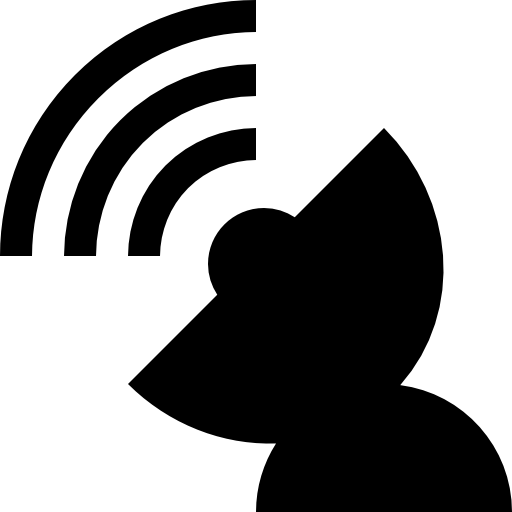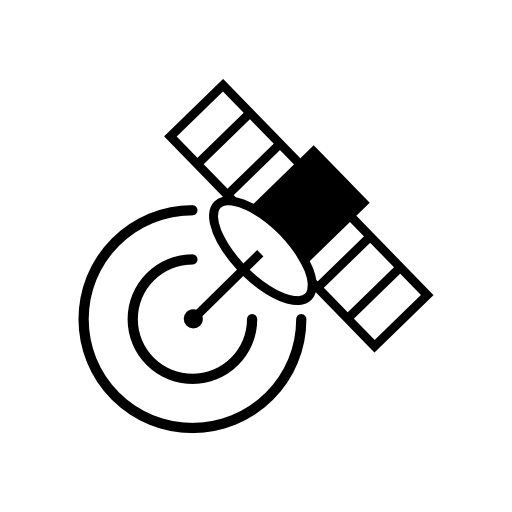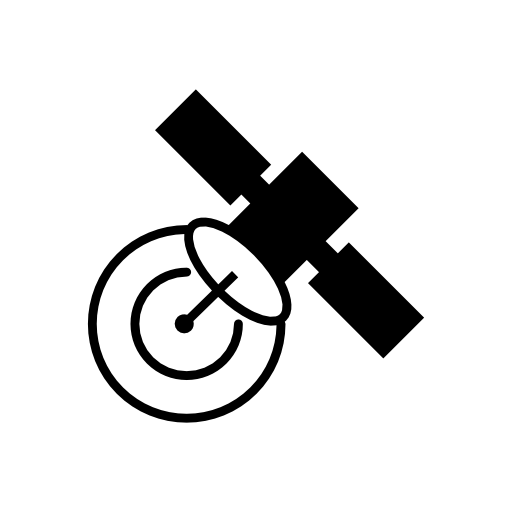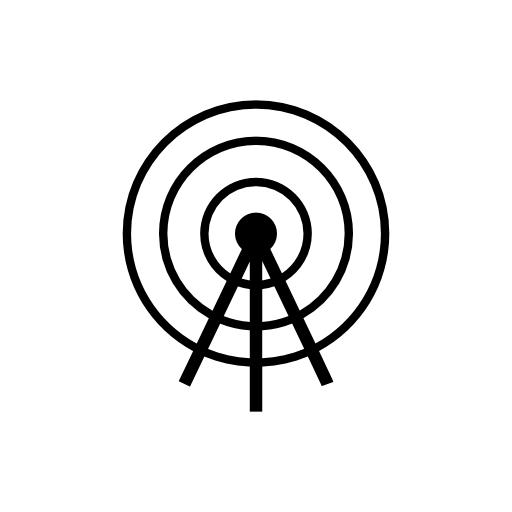"§"
Anthony (W3)
Der Name tschech. "Antonín", dt. "Anton", (fem. dt. "Antonia"), span. "Antonio", weibl. frz. "Antoinette", ital. "Antonio", engl. "Anthony", (Kurzformen: "Tony", "Tonya"), lat. "Antonius", geht auf einen altrömischen Geschlechternamen zurück und könnte weiter auf griech. "anthos", "ánthos" = dt. "Blüte" zurück gehen (was aber stark bezweifelt wird),(wurde wahrscheinlich volksetymologisch assoziiert). Es wird vermutet, dass es sich um eine Übernahme aus dem Etruskischen handelt.
"Anthony": possibly "priceless" (Greek) or "flower" from Greek anthos but most likely of unknown Etruscan origin. From a Roman family name. Mark Anthony was a Roman general.
"Anton", ursprünglich ein römischer Familienname, wahrscheinlich etruskischer Herkunft, verbreitet in Deutschland durch die Verehrung des heiligen Antonius von Padua, dem Schutzpatron von Portugal (13. Jh.). Varianten: "Anton", "Toni", "Anthony", "Antoine", "Antonio", "Tonio", "Tony", "Antonius"
(E?)(L?) http://www.babynamewizard.com/baby-name/boy/anthony
Origin of the name "Anthony":
Derived from the Latin "Antonius", an old Roman family name of unknown etymology. "Priceless" and "of inestimable worth" are popular folk definitions of the name.
Var: "Anton", "Antonio". Short: "Toni", "Tonio", "Tony".
...
(E?)(L?) http://www.behindthename.com/php/view.php?name=antonius
(E?)(L?) http://www.behindthename.com/php/view.php?name=anthony
"Antoni" ist die kat. Form von "Antonius".
Weitere Namen, die mit "Antonius" und "Anthony" - in verschiedenen Sprachen - zusammenhängen sind: "Anakoni", "Anchjo", "Andoni", "Antal", "Antanas", "Ante", "Antía", "Anto", "Antoine", "Antón", "Anton", "Antonella", "Antonello", "Antónia", "Antonia", "Antonie", "Antonino", "António", "Antonio", "Antonius", "Antono", "Antony", "Antton", "Antun", "Tóni", "Tony" und der Familienname "Anthonyson".
(E?)(L?) http://www.cbgfamilienamen.nl/nfb/
- Anthonis
- Anthonij
- Anthoni
- Anthonio
- Anthonissen
- Anthonijsz
- Antony
- Anthony
(E?)(L?) https://www.dastelefonbuch.de/Suche/Anthony
"Anthony" im Telefonbuch
(E?)(L?) http://dmnes.org/name/Anthony
Dictionary of Medieval Names from European Sources
"Anthony" m. Latin Antonius, a Roman gens. The gens may itself be of Etruscan origin.
...
- "Antene"
- "Anthaine"
- "Anthenis"
- "Anthenius"
- "Antheunis"
- "Antheunisse"
- "Anthoen"
- "Anthoene"
- "Anthoenis"
- "Anthoin"
- "Anthoine"
- "Anthon"
- "Anthone"
- "Anthoni"
- "Anthonie"
- "Anthonii"
- "Anthonij"
- "Anthonijs"
- "Anthonio"
- "Anthonioto"
- "Anthoniotus"
- "Anthonis"
- "Anthonium"
- "Anthonius"
- "Anthonlin"
- "Anthonodi"
- "Anthony"
- "Anthonye"
- "Anthonys"
- "Anthoon"
- "Anthoyne"
- "Antoine"
- "Antol"
- "Anton"
- "Antone"
- "Antonelli"
- "Antonello"
- "Antonellus"
- "Antonelus"
- "Antoni"
- "Antonie"
- "Antonii"
- "Antonij"
- "Antonin"
- "Antonino"
- "Antoninus"
- "Antonio"
- "Antoniolo"
- "Antonium"
- "Antonius"
- "Antony"
- "Antonye"
- "Antonyo"
- "Antoyne"
- "Ianthol"
- "Iantol"
- "Iatol"
- "Thonin"
- "Thonius"
- "Thonnis"
- "Thonnys"
- "Thonyes"
- "Thonys"
- "Tones"
- "Tonis"
- "Tonnies"
- "Tonnis"
- "Tönies"
(E?)(L?) http://www.etymonline.com/index.php?term=Anthony
"Anthony", masc. proper name, from Latin "Antonius", name of a Roman gens (with unetymological "-h-" probably suggested by many Greek loan words beginning "anth-", such as "anthros" "flower", "anthropos" "man").
"St. Anthony" (4c.), Egyptian hermit, was patron saint of swineherds, to whom one of each litter was usually vowed, hence "Anthony" for "smallest pig of the litter" (1660s; in condensed form "tantony pig" from 1590s). "St. Anthony's Fire" (1520s), popular name for erysipelas, is said to be so called from the tradition that those who sought his intercession recovered from that distemper during a fatal epidemic in 1089.
(E?)(L?) http://www.meilleursprenoms.com/prenom.php/Anthony
"ANTHONY"
Origine et sens : "inestimable" (latin), "fleur" (grec).
Autres prénoms associés
"Andon", "Andoni", "Anthonny", "Antoine", "Antolin", "Anton", "Antone", "Antonello", "Antoni", "Antòni", "Antonie", "Antonien", "Antonin", "Antonino", "Antonio", "Antony", "Antton", "Anttoni", "Thony", "Titouan", "Toni", "Tonin", "Tonino", "Tonio", "Tonny", "Tony"
...
(E?)(L?) https://www.nordicnames.de/wiki/Anthony
"Anthony", Male Name
Usage: Swedish, Finnish, Danish, Norwegian, Icelandic
Origin and Meaning: English form of "Antonius"
...
(E?)(L?) https://www.nordicnames.de/wiki/Antonius
"Antonius", Male Name
Usage: Swedish, Finnish, Danish, Norwegian
Origin and Meaning
Roman nomenRelated Names
- 1) Name with Etruscan roots of uncertain meaning
- 2) Name with Greek roots maybe meaning "priceless one"
- 3) Latin "antius" = "chief", "leader"
- 4) From the 17th century on, the name has incorrectly been associated with the Greek word "anthos" = "flower"
- Aantuut
- Aatuut
- Anaton
- Anska
- Ante
- Anthon
- Anthoni
- Anthonie
- Anthonio
- Anthonius
- Anthony
- Antines
- Antinis
- Antoine
- Anton
- Antonesen
- Antoni
- Antonia
- Antonio
- Antonius
- Antoniusen
- Antoniussen
- Antons
- Antony
- Antoníus
- Antoska
- Anttaani
- Antto
- Antton
- Anttoni
- Anttooni
- Anttuuni
- Antuut
- António
- Antóníus
- Antût
- Toni
- Tonik
- Tonius
- Tynimys
- Tönius
- Ánton
- Âtût
- Ãntût
(E?)(L?) http://www.oocities.org/edgarbook/names/az/anthony.html
"Anthony"
Etymology: "Anthony" is the modern English form of an Ancient Greek name, "Antony". It original meaning is unknown, but it could be "Flowering" from "anther" ("flower"), or "Priceless", or "Beyond Praise".
The popularity of early saints like "St. Anthony the Great" and "St. Anthony of Padua" led to "Anthony" being fairly common in England from the 12th century on. From the 12th century until the 17th century, the name was commonly spelled "Antony", less the "h". However, a revived interest in the Greek language led to the assumption that "Antony" was derived from the word "anther" and the spelling was “corrected” by adding an "h".
- Adoni
- Akoni
- Anntoin
- Antain
- Antaine
- Antaki
- Antal
- Antecki
- Anthonie
- Anthonius
- Anthonye
- Antione
- Antoine
- Anton
- Antone
- Antonette
- Antoni
- Antonie
- Antonin
- Antonino
- Antonio
- Antonius
- Antonyo
- Antonín
- Antton
- Koni
- Thoin
- Thoine
- Thon
- Togni
- Toin
- Ton
- Tonete
- Toney
- Toni
- Tonin
- Tonio
- Tony
- Toño
- Tönjes
(E?)(L?) http://www.orbilat.com/Romance_Onomastics/Personal/Romance/Frame.html
- "Andon" f (Bul.) (Àíäîí) variant of "Anton"
- "Anthony" m (E.) - L. "Antonius"
- "Antoaneta" f (Bul.) (Àíòîàíåòà) - F. "Antoinette"
- "Antoine" [{'twan] f (F.) - L. "Antonius"
- "Antoinette" [{twa'nEt] f (F.) feminine form of "Antoine", formed with the diminutive suffix "-ette"
- "Anton" m (G., OS., Rus., Bul.) - L. "Antonius"
- "Antonette" f (Am.) adaptation of the F. "Antoinette"
- "Antonia" f (L., It., Sp., Port., E., OS., Pol., Rus., Bul., Serb.) feminine form of "Antonius"
- "Antonina" f (L., It., Sp., Port., E., Pol., OS., Rus., Bul.) feminine form of "Antoninus"
- "Antoninus" f (L.) - "Antonius". Antoninus Pius was a mild-mannered and capable Roman emperor (ruled 138-161 A.D.)
- "Antonio" m (It., Sp., Port.) - L. "Antonius"
- "Antonius" m (L.) - Etruscan, meaning unknown. It was a name of a Roman gens
- "Antwan" m (Am.) adaptation of the F. "Antoine" - L. "Antonius"
- "Dona" ['dOna] f (Bul.) (Äîíà) form of "Donka"
- "Doncho" ['dOntSO] m (Bul.) (Äîí÷î) popular pet form of "Andon" - L. "Antonius"
- "Donka" ['dOnka] f (Bul.) (Äîíêà) feminine form of "Donyo" or "Doncho"
- "Donyo" ['dOnjO] m (Bul.) (Äîíüî) popular pet form of "Andon" - L. "Antonius"
- "Latonya" f (Am.) An alteration of "Tonya" which is from "Antonia"
- "Latoya" f (Am.) variant of "Latonya"
- "Toinette" [twa'nEt] f (F.) pet form of "Antoinette"
- "Tona" f (Am.) short form of "Antonia"
- "Tonette" f (Am.) adaptation of F. "Toinette"
- "Toney" m (Am.) variant of "Tony" (2)
- "Toni" (1) f (Sp., Am.) pet form of "Antonia"
- "Toni" (2) mf (Bul.) pet form of "Anton" or "Antonia"
- "Tonia" f (Am.) short form of "Antonia".
- "Tonie" f (E.) pet form of "Antonia"
- "Tonisha" f (Am.) - "Toni" (1)
- "Tonita" f (Sp., Am.) diminutive form of "Toni" (1) with the suffix "-ita"
- "Tonja" f (Am.) alteration of "Tonia"
- "Tonka" f (Bul.) pet form of "Antonia"
- "Tonton" [t_'t_] f (F.) pet form of "Antoinnette".
- "Tony" m (E.) pet form of "Anthony"
- "Tonya" f (Am.) alteration of "Tonia"
- "Toto" m (F., It.) pet form of "Antoine" or "Antonio"
(E?)(L?) http://www.sacklunch.net/personalnames/A/AntonyAnthony.html
"Antony", "Anthony"
"Antony", "Anthony": From Latin "Antonius", meaning "inestimable". According to Littleton, the Antonian family were descended from "Antius", son of Hercules.
(E?)(L?) http://www.searchforancestors.com/surnames/origin/a/anthony.php
"Anthony" Surname Origin
(Latin) Hercules-descended. "Antius", a son of Hercules. The inserted "-h-" is probably due to the Dut. from "Anthonius".
...
(E?)(L?) http://www.thinkbabynames.com/meaning/1/Anthony
Variations:
"Andy", "Antal", "Anthone", "Anthoney", "Anntoin", "Antin", "Antoine", "Anton", "Antone", "Antonello", "Antoney", "Antoni", "Antonije", "Antonin", "Antonine", "Antonino", "Antonio", "Antonius", "Antons", "Antony", "Antun", "Antuwan", "Antwahn", "Antwohn", "Antwon", "Antwuan", "Teunis", "Thonus", "Toney", "Toni", "Tony", "Twan"
SEE ALSO "Anfernee", "Danton"
OTHER FORM VIA "ANTON", "TONY", "Andon"
FEMININE FORMS "Antoinette", "Antonia"
(E?)(L?) http://www.vocabulary.com/
- Anthony Roman general under Julius Caesar in the Gallic wars
- Anthony Burgess English writer of satirical novels (1917-1993)
- Anthony Charles Lynton Blair British statesman who became prime minister in 1997
- Anthony Comstock United States reformer who led moral crusades against art and literature that he considered obscene (1844-1915)
- Anthony Hopkins Welsh film actor (born in 1937)
- Anthony Trollope English writer of novels (1815-1882)
- Anthony Vandyke Flemish painter of numerous portraits (1599-1641)
- Anthony Wayne American general during the American Revolution (1745-1796)
- Chloe Anthony Wofford United States writer whose novels describe the lives of African-Americans (born in 1931)
- John Anthony Ciardi United States poet and critic (1916-1986)
- Mad Anthony Wayne American general during the American Revolution (1745-1796)
- Mark Anthony Roman general under Julius Caesar in the Gallic wars
- Mark Antony Roman general under Julius Caesar in the Gallic wars
- Saint Anthony's fire any of several inflammatory or gangrenous skin conditions
- Sir Anthony Hopkins Welsh film actor (born in 1937)
- Sir Anthony Philip Hopkins Welsh film actor (born in 1937)
- Sir Anthony Vandyke Flemish painter of numerous portraits (1599-1641)
- St. Anthony's cross cross resembling the Greek letter tau
- Susan Anthony United States suffragist (1820-1906)
- Susan B. Anthony United States suffragist (1820-1906)
- Susan B Anthony dollar a United States coin worth one dollar
- Susan Brownell Anthony United States suffragist (1820-1906)
(E?)(L?) https://www.yourdictionary.com/anthony
...
"Anthony": a masculine name: dim. "Tony"; var. "Antony"; equiv. L. "Antonius", It. & Sp. "Antonio", Fr. "Antoine", Ger. & Russ. "Anton"; fem. "Antonia"
Origin of Anthony: with unhistoric "-h-" from Classical Latin "Antonius", name of a Roman gens
...
- ( 251-356); Egypt. hermit: founder of Christian monasticism: his day is Jan. 17: called the Great
- (1195-1231); Franciscan friar in France & Italy, born in Portugal: his day is June 13
- also called Saint "Anthony of Padua"
- see: "Mark Antony"
- 1820-1906; U.S. leader in the movement for women's suffrage
(E?)(L?) https://www.yourdictionary.com/
- Anthony Benezet (biography)
- Anthony Burgess (biography)
- Anthony Burns (biography)
- Anthony Caro (biography)
- Anthony Comstock (biography)
- Anthony Eden (biography)
- Anthony M. Kennedy (biography)
- Anthony McAuliffe (biography)
- Anthony Meuza Van Diemen (biography)
- Anthony of Padua (biography)
- Anthony Philip Heinrich (biography)
- Anthony Powell (biography)
- Anthony Quinn (biography)
- Anthony Trollope (biography)
- Anthony Van Dyck (biography)
- Anthony Wayne (biography)
- David Anthony Llewellyn Owen (biography)
- James Anthony Froude (biography)
- Lido (Lee) Anthony Iacocca (biography)
- Paul Anthony Samuelson (biography)
- Robert Anthony Stone (biography)
- Sir Anthony Hopkins (biography)
- St. Anthony (biography)
- Susan Brownell Anthony (biography)
- Alito Samuel Anthony, Jr.
- Anthony
- Anthony of Padua
- Anthony Susan Brownell
- anthonyite
- Blair Anthony Charles Lynton
- Burgess Anthony
- Ciardi John Anthony
- Comstock Anthony
- Corea Armando Anthony
- Eden (Robert) Anthony
- Kennedy Anthony McLeod
- knock-anthony
- Powell Anthony Dymoke
- Saint Anthony's cross
- saint-anthony-s-crosses
- Saint Anthony's fire
- saint-anthony-s-fires
- Samuelson Paul Anthony
- st-anthony-s-cross
- st-anthony-s-crosses
- st-anthony-s-fire
- Susan B. Anthony Day
- Trollope Anthony
- Vandyke Anthony
- Wayne Anthony wa
(E1)(L1) http://books.google.com/ngrams/graph?corpus=0&content=Anthony
Abfrage im Google-Corpus mit 15Mio. eingescannter Bücher von 1500 bis heute.
Engl. "Anthony" taucht in der Literatur um das Jahr 1510 auf.
(E?)(L?) https://corpora.uni-leipzig.de/
Erstellt: 2018-02
 satellite.png
satellite.png
 satellite1.png
satellite1.png
 satellite2.png
satellite2.png
 satellite3.png
satellite3.png
 satellite7.png
satellite7.png
 satellite8.png
satellite8.png
 satellite11.png
satellite11.png